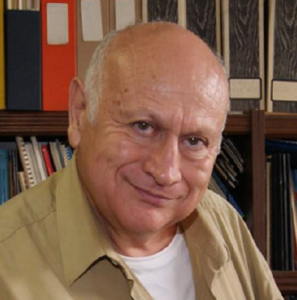Ciro Falcony
- General Information
- Symposia
- Atomic Layer Deposition
- Biomaterials and Polymers
- Characterization and Metrology
- Luminescence Phenomena: Materials and Applications
- Microelectronics and MEMS
- Multifunctional and Magnetic Materials
- Nanostructures
- Plasma and Vacuum
- Renewable Energy: Materials and Devices
- Semiconductors
- Tribology, Surfaces and Interfaces
- Theory and Simulation of Materials
- Thin Films
- Science Outreach
- General Program
- Plenary Lectures
- Short Courses
- Technical Talk
- Congress Registration
- Second Athletic Race Registration
- Posters
- Abstract Submission 2024
- Commitees
- Fees
- Hotel Accomodation
- Awards/Grants
- Sponsors and Exhibit
- Book of Abstracts

Ciro Falcony Guajardo
Professor
Department of Physics
Affiliation: Electrical and Computer Engineering
Cinvestav-IPN, CDMX, México
ciro.falcony@cinvestav.mx
Selected Honours and Awards
- 1998 Dyoniza Ilkovica Medal awarded by the Slovak Academy of Sciences for Research achievements on Physics and Physic-chemistry areas
- 2012 Medalla Fernando Alba, IF UNAM, for achievements on Experimental Physics
- 2017 Presea Lazaro Cardenas, by IPN for outstanding physics and mathematics career achievements.
Selected Funding
- CONAHCyT, NSF
Research Project: Synthesis and characterization of luminescent organic/inorganic hybrid materials.
My lab has the overall interest of understanding the physics and chemical mechanisms of light absorption and emission in nanostructured materials. In particular, I am interested in the synthesis and characterization of hybrid organic/inorganic materials based on metal and nano particles functionalized with organic molecules or complexes. At Cinvestav, I have established my lines of research focusing on the design, synthesis and characterization of this type of materials with techniques such as spray pyrolysis, sputtering, hydrothermal and other synthesis techniques and spectral light absorption, emission and structural characterization using technique such as spectrofluorimetry, x-ray diffraction scanning and transmission electron microscopy among other characterization techniques. The potential applications for these materials include solar energy harvesting and medical imaging and treatments of specific type of cells and biological systems.
Environmental impact of lighting and solar energy harvesting
This presentation is focused on the cutting-edge realm of sustainable lighting and solar energy harvesting, addressing the pressing need for ecologically viable solutions. Within this landscape, many interdisciplinary strategies have emerged, combining technical ingenuity with economic feasibility.
One pivotal issue is the innovative design and synthesis of phosphor, and luminescent coatings tailored for White Light Emitting Diodes (WLEDs) and Solar Energy Harvesting (SEH) through a spectral conversion mechanism. This approach plays a crucial role in enhancing their efficiency and efficacy, thereby advancing their applicability in sustainable lighting and solar energy generation. Moreover, the importance of augmenting solar light harvesting capabilities, aiming to bolster the efficiency of commercially available solar cells while also conceptualizing novel designs for photovoltaic devices is stressed.
Particularly the utilization of hybrid organic/inorganic and all-inorganic compounds is reviewed. Harnessing the unique properties of these materials to optimize both solid-state lighting and solar energy harvesting technologies with an environmental sustainable edge.
